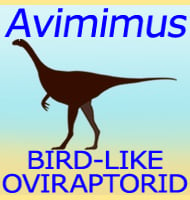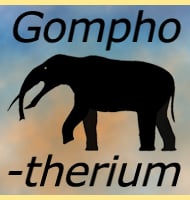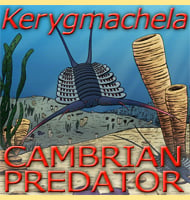In Depth
There is not a lot of information about Sarcosaurus due to the relatively incomplete remains from only the pelvic region of the body. This makes it impossible to ascertain the form and structure of other body parts such as the head, hands and feet, something that makes exact classification of this dinosaur near impossible. In the past Sarcosaurus has been classified as a megalosauroid (similar to Megalosaurus), a ceratosaur (similar to Ceratosaurus) to even a coelophysoid (similar to Coelophysis).
Sarcosaurus also has an intermeshed taxonomic history with other dinosaurs, specifically Magnosaurus. In 1932 the German palaeontologist Friedrich von Huene assigned a tibia (lower leg bone) to both Magnosaurus and Sarcosaurus and additionally included the type species of Sarcosaurus within Magnosaurus that was newly created at the time. Later however von Huene assigned priority of the tibia to Sarcosaurus as a second species called S. andrewsi; however in 1974 this was in turn reclassified as a species of Megalosaurus by Michael Waldman. Today the second species of S. andrewsi is considered a nomen dubium because other palaeontologists either consider there to be no appreciable difference, or come to the conclusion that it is impossible to assign a new fossil to Sarcosaurus since there are no other remains to compare it to.
Another set of post cranial remains was assigned to Sarcosaurus by von Huene in 1932, however there is uncertainty to the validity of these remains as well. However again it has proven impossible to conclusively attribute these remains to Sarcosaurus and the remains in question are currently known as ‘Liassaurus’. ‘Liassaurus’ however is an informal name, and the remains they describe are currently considered to represent an unidentifiable theropod dinosaur (due to the incomplete preservation of this skeleton). This does not entirely rule out the possibility that ‘Liassaurus’ may still actually be another specimen of Sarcosaurus, which is why it is often considered a nomen nudum, which basically means that it is a ‘naked name’ that is not considered scientifically valid.
Further Reading
– On some remains of a theropodous dinosaur from the Lower Lias of Barrow-on-Soar. – Annals and Magazine of Natural History, series 9 8:570-576. – C. W. Andrews – 1921. – A revision of the early neotheropod genus Sarcosaurus from the Early Jurassic (Hettangian–Sinemurian) of central England. – Zoological Journal of the Linnean Society. – M. D. Ezcurra, R. J. Butler, S. C. R. Maidment, I. J. Sansom, L. E. Meade & J. D. Radley – 2020.









